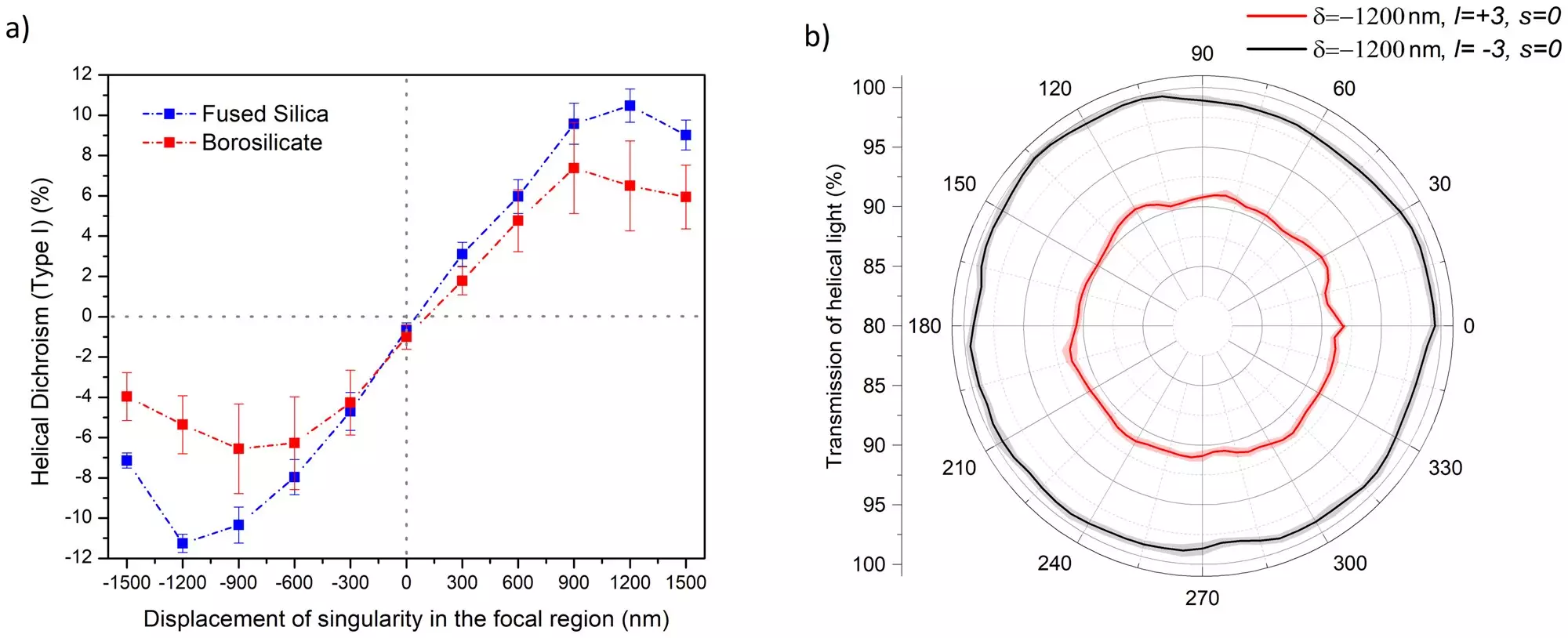For many years, the scientific community believed that amorphous solids lacked the ability to selectively absorb light due to their disordered atomic structure. However, a recent study conducted at the University of Ottawa has challenged this long-standing theory. Researchers at uOttawa have discovered that amorphous solids exhibit dichroism, meaning they can selectively absorb light of different polarizations. This groundbreaking finding contradicts previous beliefs and opens up new possibilities for manipulating the interactions between light and these materials.
The study, titled “Intrinsic dichroism in amorphous and crystalline solids with helical light,” sheds light on how helical light beams can unveil the dichroism present in disordered solids. Led by Professor Ravi Bhardwaj and doctoral students Ashish Jain and Jean-Luc Bégin, this research delves into the unique optical properties of amorphous materials. By utilizing helical light beams carrying orbital angular momentum, the researchers were able to probe the optical characteristics of both amorphous and crystalline solids with unprecedented precision.
The implications of this study extend far beyond the realm of traditional beliefs about amorphous solids. By showcasing that non-crystalline materials can exhibit helical dichroism, the research team has paved the way for new insights into material behavior under specific types of light. Professor Bhardwaj emphasizes the significance of these findings for multiple fields, including materials science, optics, and chiroptical spectroscopy. The ability to control a material’s optical behavior by using helical light beams opens up a world of possibilities for innovative applications and further exploration.
Advancing Our Understanding of Solid-State Materials
The use of helical light beams as an indirect probe of short-to-medium-range order in disordered solids has pushed the boundaries of our understanding of amorphous materials. The research conducted by Ashish Jain and Jean-Luc Bégin has provided valuable insights into the mysterious nature of amorphous solids, shedding light on their optical properties and potential applications. By demonstrating the existence of intrinsic dichroism in both crystalline and amorphous solids, this study has laid the foundation for future research into the unique capabilities of helical light beams in manipulating material properties.
The impact of helical light beams on amorphous solids is far-reaching and transformative. This research challenges traditional beliefs, expands our understanding of material properties, and opens up new avenues for exploration in the fields of optics, materials science, and beyond. By leveraging the power of helical light beams, scientists are poised to unlock the full potential of amorphous solids and revolutionize the way we interact with these unique materials.


Leave a Reply